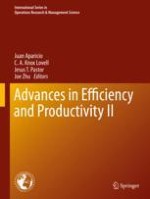2020 | OriginalPaper | Buchkapitel
A Novel Two-Phase Approach to Computing a Regional Social Progress Index
verfasst von : Vincent Charles, Tatiana Gherman, Ioannis E. Tsolas
Erschienen in: Advances in Efficiency and Productivity II
Aktivieren Sie unsere intelligente Suche, um passende Fachinhalte oder Patente zu finden.
Wählen Sie Textabschnitte aus um mit Künstlicher Intelligenz passenden Patente zu finden. powered by
Markieren Sie Textabschnitte, um KI-gestützt weitere passende Inhalte zu finden. powered by
